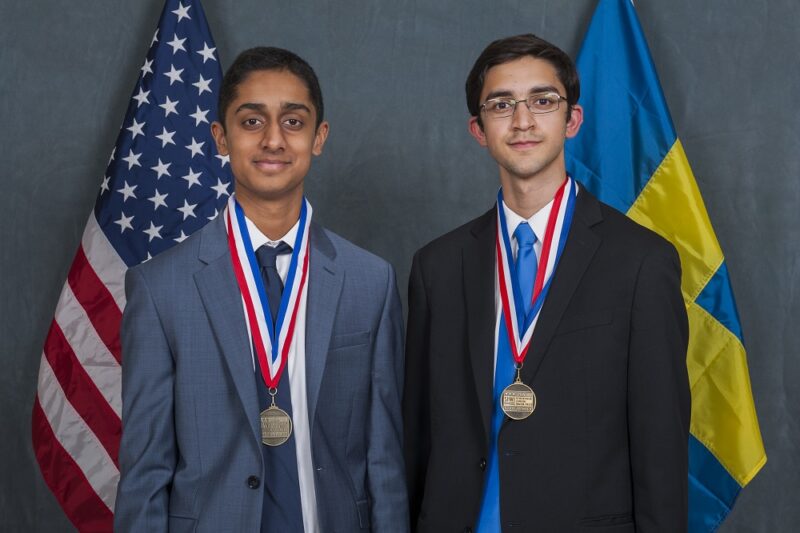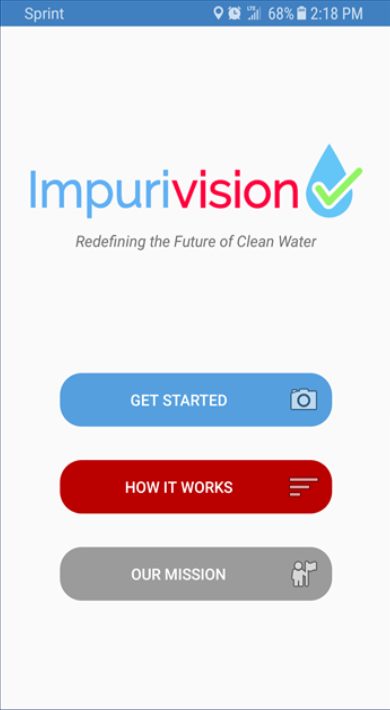
This year, high school seniors Palash Shah and Kartik Chugh, from Westfield High School and Chantilly High School, respectively, competed at the Intel International Science and Engineering Fair, where they presented their machine learning project, Impurivision. The mobile app allows anyone to analyze a cup of water for major contaminants, simply by taking a few photos.
The app applies the artificial intelligence technique known as deep learning convolutional neural networking to quickly and accurately determine if the water is safe to drink, and if not, identify which contaminants are in the water. (To learn more about Impurivision, check out Palash and Kartik’s website.)
Palash has conducted machine learning research in Italy at Fondazione Bruno Kessler, while Kartik conducts computer science research at George Mason University. WashingtonExec chatted with both to find out more about their app and why kids should be involved in STEM,
WashingtonExec: What first interested you both in this project?
Palash and Kartik: As we contemplated real-world problems to tackle through a research project, we thought about our own experiences and background. Being from India, we had seen firsthand the water conditions that plague the developing world. Too often, unclean water is accepted as an unchangeable fact of life. To make matters worse, ineffective governance inhibits the discovery, investigation and ultimately, the solving of water contamination.
After doing more research on global water contamination, we realized that a technological innovation tailored toward the root of the problem — the difficulty in detecting harmful substances in water — could empower communities to hold officials accountable and equip private and public organizations with the data needed to take effective action. We decided to use our talents in machine learning and software engineering to create a mobile app usable by the 6 billion people with a device.
WashingtonExec: How does the Impurivision app utilize deep learning convolutional neural networking?

Palash and Kartik: A convolutional neural network is an artificial intelligence algorithm modeled after the human brain. Similar to the brain’s visual cortex, CNNs that are exposed to a large collection of images recognize visual patterns in them and learn to identify these patterns in new situations. The CNN we built for Impurivision extracted refraction, transparency and discoloration patterns from a data set of 9,000 images of clean and contaminated water in order to acquire an understanding of what constitutes water contamination.
Our mobile application prompts the user to take two birds-eye images: one of an empty cup and another of the cup filled with water. The two images are subtracted to produce a “difference image,” which is fed to our CNN. Based on its previously acquired “knowledge,” the CNN is able to classify the image as showing clean or contaminated water, and in case of the latter, identify the specific contaminants.
Our app displays this information to the user and enables them to report contamination to local authorities. Additionally, all water test results are plotted on a map for use by governments, researchers and organizations.
WashingtonExec: What applications do you see for Impurivision in the future? What are your next steps?
Palash and Kartik: As we developed Impurivision from an abstract idea to a concrete software, we never lost sight of the fact that accessibility and usability are key to achieving impact. Much machine learning research is theoretical but not immediately translatable for widespread use by and for people.
To make Impurivision viable for real-world use, we incorporated the reporting and mapping features and designed the app to work with different types of phones or cameras. Currently, we are working with a local water treatment facility as well as a university professor to flesh out our infrastructure for these features. Following extensive testing and improvements, we hope to publish Impurivision as a downloadable free app.
WashingtonExec: Why do think more kids should be involved with STEM?
Palash and Kartik: STEM builds skills in analytical thinking and problem-solving, both of which train us to see the world in exciting ways. STEM creates a gateway for kids to make a difference, even in a world that seems to be run by adults. Our experience with Impurivision taught us that through a combination of inspiration and perspiration, anyone can turn their dreams into reality through STEM, regardless of age. STEM also has a side benefit — it can ignite a lifelong love for learning.
WashingtonExec is hosting the annual K-12 STEM Symposium on March 30, 2019. The event is free and open to the public, but attendees are asked to register in advance.

